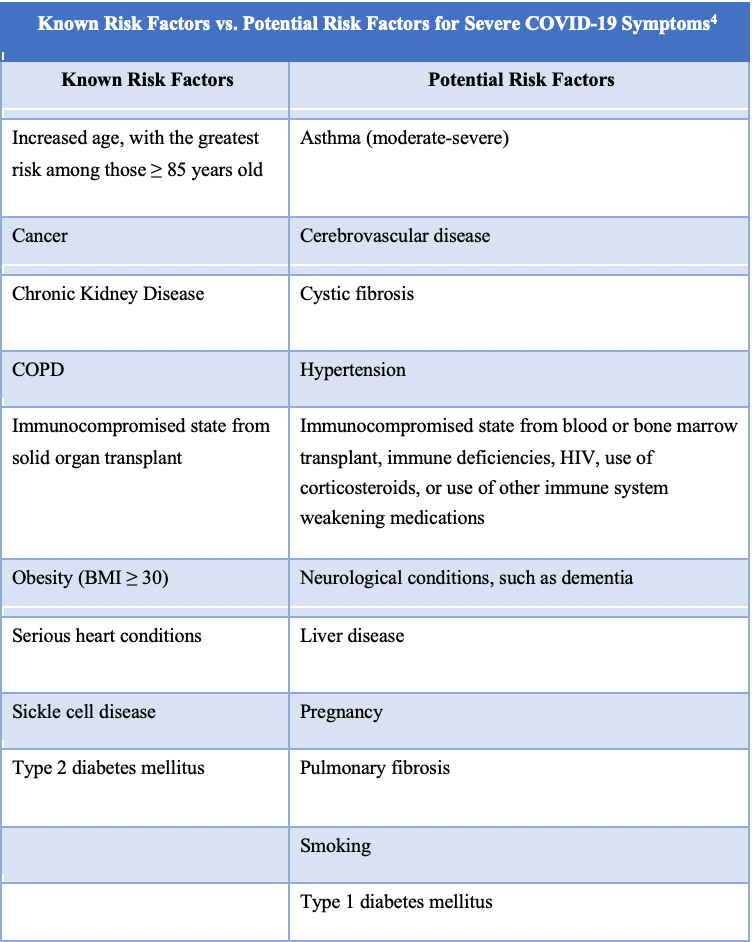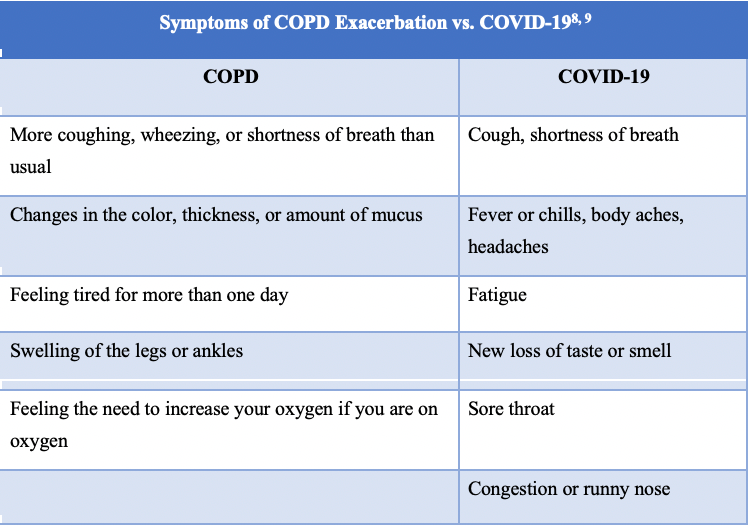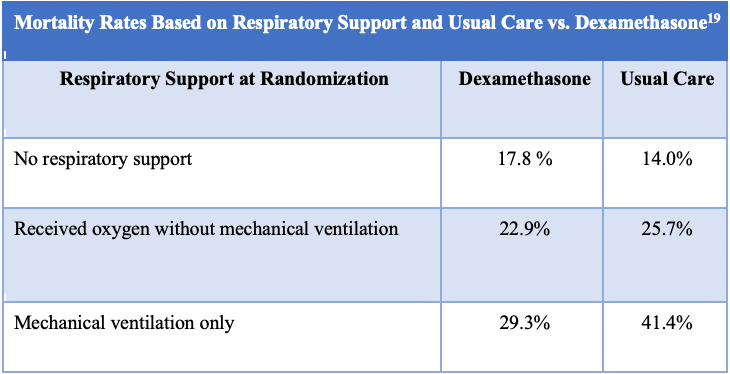Article
COVID-19 Has Devastating Effects for Patients Suffering From COPD
Author(s):
While the prevalence of COVID-19 in patients with COPD is relatively low, those who are infected with the virus experience more severe symptoms than those without COPD.
The COVID-19 pandemic has dramatically impacted lives across the world. Many are now working from home, avoiding gatherings, adhering to social distancing rules, and are not leaving the house without a mask. Heightened awareness and concern to slow the spread of this deadly disease is particularly important to protect those with underlying respiratory ailments, such as chronic obstructive pulmonary disease (COPD). Proper management of COPD and strategies to prevent contraction of the virus are imperative to maintain the health of this vulnerable population during such a challenging time.
COVID-19 is a novel disease spread by the virus SARS-CoV-2. First detected in Wuhan, China on December 31, 2019, it was later declared a pandemic by the World Health Organization on March 11, 2020.1 The coronavirus is a positive-stranded RNA virus that was previously seen in 2003 as SARS-CoV and in 2012 as MERS-CoV.2 As of February 25, 2021, there are a total of 27.9 million confirmed cases and almost 500,000 deaths in the United States; the number is estimated to continue to rise.3
Patients with significant comorbidities are extremely vulnerable and susceptible to this disease.2 According to the CDC, the risk for severe illness due to COVID-19, resulting in hospitalization and death, increases with age. In fact, 8 out of 10 deaths caused by COVID-19 have been in adults 65 years and older.4 Additionally, adults 65 years of age and older are more likely to suffer from COPD; while the prevalence of COVID-19 is relatively low in COPD patients, individuals with COPD infected with the virus are associated with higher mortality compared to individuals without COPD.5
Social distancing is a critical aspect that has heavily impacted how people interact to limit the spread of the virus in the community. For patients with respiratory diseases, it is especially important that they adhere to this because the pandemic has changed the way clinicians manage and prevent patients from contracting the disease.

SARS-CoV-2 uses an enzyme called the angiotensin-converting enzyme II (ACE-2) as a receptor to gain access into the cell.6 ACE-2 is expressed in many tissues of the body, including on the epithelial cells of the upper and lower respiratory tract.6 The virus has a very high binding affinity for ACE-2, which may contribute to the ease with which the virus can spread from human to human.7
In those with COPD, ACE-2 levels were significantly increased compared to those without COPD. In fact, as a patient’s FEV1 decreases, their ACE-2 levels increase.6 This upregulation in ACE-2 expression may provide some explanation as to why those with comorbidities, particularly COPD, may experience more severe symptoms of COVID-19.

Patients with both COPD and COVID-19 commonly experience dyspnea, or shortness of breath. However, there are a few ways to differentiate between COVID-19-related dyspnea and COPD exacerbation.10 COVID-19 patients may experience change in or loss of taste or smell.10 A person can develop symptoms between 2 to 14 days after contact with the virus.10 Since COVID-19 developments are rapidly changing, guidelines for vaccines and medications have yet to be approved.10
To prevent the spread of COVID-19, testing is crucial to help identify anyone who came into contact with infected individuals so they too can be treated. The CDC recommends 2 tests for COVID-19, including a viral test and an antibody test. A viral test will determine if individuals have a current infection,11 whereas an antibody test detects a past infection because it can take 1 to 3 weeks after infection for the body to develop antibodies.11 The antibodies produced might provide protection from getting infected with the virus again.11
The CDC published 5 categories of people with testing recommendations:12
- Individuals with signs or symptoms of COVID-19
- Asymptomatic individuals with known or suspected exposure to an individual with COVID-19
- Asymptomatic individuals without known or suspected exposure
- Testing to determine resolution of infection
- Testing for purposes of public health surveillance
Studies have shown that 2% of patients diagnosed with COVID-19 have also been diagnosed with COPD.13 While the prevalence of COVID-19 in patients with COPD is relatively low, those who are infected with the virus experience more severe symptoms than those without COPD. Severe symptoms include trouble breathing, chest pain, new confusion, inability to stay awake, and bluish color in the lips and face.9
A meta-analysis found that within COPD patients diagnosed with COVID-19, 63% of patients that had COVID-19 symptoms reported them as severe, compared to 33.4% of patients without COPD.13 The results conclude that individuals with COPD are at a higher risk of developing more severe complications and higher rates of mortality due to COVID-19, compared to patients without COPD.13 Moreover, recent studies show that patients with COPD have a 4-fold increased risk of developing symptoms severe enough to require intensive care or mechanical ventilation.5
Although COVID-19 mainly affects the respiratory system through minor damage to other organ systems, it has been found that acute myocardial injury and acute renal injury can occur in patients experiencing severe symptoms.14 In severe cases of COVID-19, patients may also develop acute respiratory distress syndrome (ARDS), which may often require mechanical ventilation. ARDS occurs as a result of an acute systemic inflammatory response that results from direct or indirect damage to the lungs.14 The reported incidence of ARDS was between 15.6% and 31%, notably higher compared to other organ injuries.14
Additionally, data from recent studies show that ventilator-induced lung injury (VILI) is proven to contribute to mortality in patients with ARDS.15 In ARDS, surfactant dysfunction and the weight of the swelling lung leads to regional collapse of lung tissue.15 When the alveoli collapse, excessive stress is produced at the interface between the air and the collapsed airway resulting in mechanical injury.15
Mechanical lung injury activates proinflammatory and a cytokine cascade, which may also promote injury in areas not faced with significant mechanical injury.15 To minimize trauma, it is clinically suggested to use low tidal volume ventilation.16 The longer patients are on mechanical ventilation, the more difficult it becomes to wean them off. Prolonged mechanical ventilation is associated with longer hospital stays, higher costs, more deaths, and more complications.17 Irreversible lung damage can also occur, which may lead to a need for a lung transplant.
Due to the damaging effects of mechanical ventilation, there is a need to find pharmacologic treatment to reduce the severity of COVID-19 symptoms. Remdesivir is the only FDA-approved drug for the treatment of COVID-19 and has been recommended in the treatment of patients with COVID-19 on supplemental oxygen who do not require mechanical ventilation.18 However, the National Institutes of Health (NIH) does not make a recommendation for the use of remdesivir for patients with COVID-19 who require mechanical ventilation.18
The RECOVERY trial, a national clinical trial aimed at identifying possible treatments for COVID-19, supports the use of dexamethasone, a corticosteroid, as a standard of care for severe COVID-19 patients that require oxygen and mechanical ventilation.19 According to the RECOVERY trial, for those receiving oxygen therapy without mechanical ventilation, the mortality rate with usual care without dexamethasone was 25.7%; however, it was 22.9% with usual care plus dexamethasone.
In addition, the mortality rate was dramatically reduced for those patients on mechanical ventilation and dexamethasone simultaneously, compared to usual care. Patients receiving usual care and mechanical ventilation only, without dexamethasone, experienced a mortality rate of 41.4%. However, patients on mechanical ventilation with up to 10 days of treatment with dexamethasone had a mortality rate of 29.3%.19
The purpose of using steroids such as dexamethasone to treat the virus is to decrease inflammation for a limited duration of therapy. The caveat of using oral systemic steroids chronically is that it may lead to weakening of the immune system over time, which could leave the patient more prone to infections. The RECOVERY trial has shown that dexamethasone is a promising therapy that can improve patient outcomes.

In December of 2020, the first COVID-19 vaccines became available in the United States. The 3 vaccines currently available through emergency use authorizations (EUAs) include vaccines from Pfizer-BioNTech, Moderna, and Johnson & Johnson, which have all shown to be very effective.
The 2-dose Pfizer-BioNTech COVID-19 vaccine has been shown to be 95% effective at preventing COVID-19 infection after the second dose,20 while the Moderna COVID-19 vaccine had similar efficacy of 94.1% after its second dose.21 The latest vaccine that became available through an EUA is the Johnson & Johnson single dose vaccine, which has shown to be 72% effective at preventing moderate or severe disease and 85% effective overall at preventing severe or critical disease.22
In the vaccine distribution process, the CDC recommends prioritizing health care workers and residents of long-term care facilities to receive the vaccine first, followed by each state’s own plan for distribution and prioritization of the vaccines.23 It is important for patients with COPD and respiratory conditions to monitor the vaccine distributions in their respective states, in order to get immunized as soon as possible and prevent infection.
The high rate of poor outcomes seen in COPD patients with COVID-19 indicates the need for proper management of their COPD and a heightened awareness to prevent infection with COVID-19. The Global Initiative for Chronic Obstructive Lung Disease (GOLD) strongly urges those with COPD to follow the guidance of local health officials to minimize the risk of becoming infected.
GOLD also urges patients with COPD to maintain their current treatment regimen throughout the pandemic.24 According to the GOLD guidelines, the treatment of stable COPD includes a long-acting bronchodilator, specifically a long-acting beta2 agonist (LABA) or long-acting muscarinic antagonist (LAMA).25 In more severe COPD cases, a combination of a LABA and a LAMA may be necessary, along with the addition of an inhaled corticosteroid.25

COPD exacerbations require a more intense therapeutic regimen. The GOLD guidelines recommend the use of short-acting beta2 agonists, with or without short-acting muscarinic antagonists, as initial bronchodilators for acute exacerbations.18 Systemic glucocorticoids may also be used in an acute COPD exacerbation to shorten recovery time and improve lung function. A short dose of 40 mg of prednisone for 5 days is recommended. It is important to use glucocorticoids as a short-term treatment because long-term use of systemic glucocorticoids is associated with an increased risk of pneumonia. Therefore, systemic glucocorticoids should be reserved for patients experiencing severe exacerbations.18
In addition, the differential diagnosis of COVID-19 is challenging because symptoms of COVID-19 can overlap with the ongoing and progressive symptoms of COPD.26 Therefore, it is imperative that COPD patients who are experiencing an exacerbation get tested for the virus and practice social distancing to prevent further spread.
Patients with strong adherence to their medications experience a reduction of respiratory exacerbations; this leads to less hospitalizations and economic burden on the health care system. Since the first reported cases of COVID-19 in January of 2020, an analysis published through the Journal of Allergy and Clinical Immunology reported that there has been a relative 14.5% increase out of 7578 analyzed patients in the adherence of medication used to control asthma and COPD.26 This productive change indicates that patients are becoming more aware of the state of their health and are willing to make changes to better manage it in these turbulent times.
Since pharmacists are often seen as one of the most accessible healthcare professionals, pharmacists can positively impact these statistics by advocating for preventative vaccines, adherences to medications, and preventative care in chronic disease states. If given the chance to play an active role in managing asthma and COPD, pharmacists can improve quality and health outcomes in these disease states.
As a population at high risk for developing severe COVID-19 symptoms, patients with COPD must take necessary precautions to prevent contracting the virus, including following the advice of public health teams, practicing social distancing, and wearing masks where social distancing may not be possible.
In addition to taking preventative measures, it is also necessary for patients to continue to properly manage their COPD. Adhering to their therapeutic regimen is important to prevent exacerbations and optimize their disease management. While the COVID-19 pandemic has challenged many aspects of health care, it remains critical to ensure proper therapeutic management and disease prevention in this high-risk population.
REFERENCES
1. Timeline of WHO’s response to COVID-19. World Health Organization website. https://www.who.int/news-room/detail/29-06-2020-covidtimeline. Updated April 27, 2020. Accessed June 29, 2020.
2. Auwaert P. Coronavirus COVID-19 (SARS-CoV-2). https://www.hopkinsguides.com/hopkins/view/Johns_Hopkins_ABX_Guide/540747/all/Coronavirus_COVID_19__SARS_CoV_2_. Updated June 28, 2020. Accessed June 29, 2020.
3. WHO Coronavirus Disease (COVID-19) Dashboard. World Health Organization website. https://covid19.who.int/. Updated June 30, 2020. Accessed February 25, 2021.
4. People Who Are at Increased Risk for Severe Illness. Centers for Disease Control and Prevention website. https://www.cdc.gov/coronavirus/2019-ncov/need-extra-precautions/people-at-increased-risk.html. Updated June 25, 2020. Accessed July 24, 2020.
5. Zhao Q, Meng M, Kumar R, et al. The Impact of COPD and Smoking History on the Severity of COVID-19: A systemic review and meta-analysis [published online ahead of print, 2020 Apr 15]. J Med Virol. 2020;10.1002/jmv.25889.doi:10.1002/jmv.25889. https://www.ncbi.nlm.nih.gov/pmc/articles/PMC7262275/#jmv25889-bib-0004
6. Leung JM, Yang CX, Tam A, et al. ACE-2 Expression in the Small Airway Epithelia of Smokers and COPD Patients: implications for COVID-19. Eur Respir J. 2020;55(5):2000688. Published 2020 May 14. doi: 10.1183/13993003.00688-2020https://www.ncbi.nlm.nih.gov/pmc/articles/PMC7144263/
7. Wrapp D, Wang N, Corbett KS, et al. Cyro-EM Structure of the 2019-nCoV Spike in the Prefusion Conformation. Science. 2020;367(6483):1260–1263. doi: 10.1126/science.abb250 https://www.ncbi.nlm.nih.gov/pmc/articles/PMC7164637/
8. Understanding COPD Exacerbations. COPD Step by Step website. https://www.copd.com/copd-progression/copd-exacerbations/. Updated October 2019. Accessed July 24, 2020.
9. Symptoms of Coronavirus. Centers for Disease Control and Prevention website. https://www.cdc.gov/coronavirus/2019-ncov/symptoms-testing/symptoms.html. Updated May 13, 2020. Accessed July 24, 2020.
10. The difference between influenza (Flu) and COVID-19. Center for Disease Control and Prevention website. https://www.cdc.gov/flu/symptoms/flu-vs-covid19.htm. Updated July 10, 2020. Accessed July 21, 2020.
11. Testing for COVID-19. Center for Disease Control and Prevention website. https://www.cdc.gov/coronavirus/2019-ncov/symptoms-testing/testing.html. Updated June 24, 2020. Accessed July 24, 2020.
12. Overview of Testing for SARS-CoV-2. Center for Disease Control and Prevention website. https://www.cdc.gov/coronavirus/2019-ncov/hcp/testing-overview.html. Updated July 17, 2020. Accessed July 24, 2020.
13. Alqahtani JS, Oyelade T, Aldhahir AM, et al. Prevalence, Severity and Mortality Associated with COPD and Smoking in Patients with COVID-19: A Rapid Systematic Review and Meta-Analysis. PLoS One. 2020;15(5):e0233147. https://www.ncbi.nlm.nih.gov/pmc/articles/PMC7213702/
14. Li X, Ma X. Acute respiratory failure in COVID-19: is it "typical" ARDS?. Crit Care. 2020;24(1):198. Published 2020 May 6. doi:10.1186/s13054-020-02911-9.https://ccforum.biomedcentral.com/articles/10.1186/s13054-020-02911-9
15. Beitler JR, Malhotra A, Thompson BT. Ventilator-induced Lung Injury. Clin Chest Med. 2016;37(4):633-646. doi: 10.1016/j.ccm.2016.07.004.https://www.ncbi.nlm.nih.gov/pmc/articles/PMC5131805/
16. Malhotra A. Low-tidal-volume ventilation in the acute respiratory distress syndrome. N Engl J Med. 2007;357(11):1113-1120. doi: 10.1056/NEJMct074213. https://www.ncbi.nlm.nih.gov/pmc/articles/PMC2287190/
17. Loss, Sérgio Henrique, Roselaine Pinheiro De Oliveira, Juçara Gasparetto Maccari, Augusto Savi, Marcio Manozzo Boniatti, Márcio Pereira Hetzel, Daniele Munaretto Dallegrave, et al. The Reality of Patients Requiring Prolonged Mechanical Ventilation: a Multicenter Study. Revista Brasileira de Terapia Intensiva 27, no. 1 (2015).https://doi.org/10.5935/0103-507x.20150006.
18.COVID-19 Treatment Guidelines Panel. Coronavirus Disease 2019 (COVID-19) Treatment Guidelines. National Institutes of Health website. Available at https://www.covid19treatmentguidelines.nih.gov/. Accessed July 30, 2020.
19. The RECOVERY Collaborative Group. Dexamethasone in Hospitalized Patients with Covid-19. N Engl J Med. 2021;384(8):693-704. doi: 10.1056/NEJMoa2021436.https://www.medrxiv.org/content/10.1101/2020.06.22.20137273v1
20. Polack FP, Thomas SJ, Kitchin N, et al. Safety and Efficacy of the BNT162b2 mRNA Covid-19 Vaccine. N Engl J Med. 2020;383(27):2603-2615. doi:10.1056/NEJMoa2034577. https://www.nejm.org/doi/10.1056/NEJMoa2034577?url_ver=Z39.88-2003&rfr_id=ori:rid:crossref.org&rfr_dat=cr_pub%20%200pubmed
21. Baden LR, El Sahly HM, Essink B, et al. Efficacy and Safety of the mRNA-1273 SARS-CoV-2 Vaccine. N Engl J Med. 2021;384(5):403-416. doi:10.1056/NEJMoa2035389. https://www.nejm.org/doi/10.1056/NEJMoa2035389?url_ver=Z39.88-2003&rfr_id=ori:rid:crossref.org&rfr_dat=cr_pub%20%200pubmed
22. Janssen Investigational COVID-19 Vaccine: Interim Analysis of Phase 3 Clinical Data Released. National Institute of Health website. https://www.nih.gov/news-events/news-releases/janssen-investigational-covid-19-vaccine-interim-analysis-phase-3-clinical-data-released. Updated January 29, 2021. Accessed March 5, 2021.
23. COVID-19 Vaccin Distribution: The Process. U.S. Department of Health and Human Services website. https://www.hhs.gov/coronavirus/covid-19-vaccines/distribution/index.html. Accessed February 25, 2021.
24. GOLD COVID-19 Guidance. Global Initiative for Chronic Obstructive Lung Disease website. https://goldcopd.org/gold-covid-19-guidance/. Accessed June 28, 2020.
25. Global Initiative for Chronic Obstructive Lung Disease (GOLD). Global Strategy for the Diagnosis, Management, and Prevention of Chronic Obstructive Pulmonary Disease. 2019. https://goldcopd.org/wp-content/uploads/2018/11/GOLD-2019-v1.7-FINAL-14Nov2018-WMS.pdf. Accessed June 28, 2020.
26. Kaye L, Theye B, Smeenk I, Gondalia R, Barrett MA, Stempel DA. Changes in medication adherence among patients with asthma and COPD during the COVID-19 pandemic. J Allergy Clin Immunol Pract. 2020;8(7):2384-2385. doi:10.1016/j.jaip.2020.04.053. https://www.ncbi.nlm.nih.gov/pmc/articles/PMC7194036/
27. Tal-Singer R, Crapo JD. COPD at the time of COVID-19: a COPD Foundation perspective. Chronic Obstr Pulm Dis. 2020;7(2):73-75. https://journal.copdfoundation.org/jcopdf/id/1275/COPD-at-the-Time-of-COVID-19-A-COPD-Foundation-Perspective
Newsletter
Stay informed on drug updates, treatment guidelines, and pharmacy practice trends—subscribe to Pharmacy Times for weekly clinical insights.





